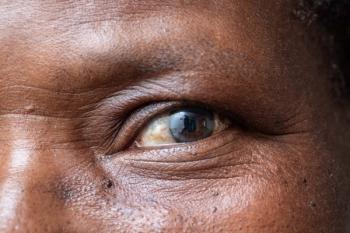
Endophthalmitis detection by whole genome sequencing and qPCR
Quantitative polymerase chain reaction and whole genome sequencing contribute to pathogen identification in endophthalmitis.
Worse outcomes after development of endophthalmitis postoperatively are associated with the presence of bacteria and higher bacterial loads of pathogens other than Staphylococcus epidermidis as detected by whole-genome sequencing (WGS) and quantitative polymerase chain reaction (qPCR).
The incidence rate of endophthalmitis that develops after intravitreal injections is low, but more and more injections are being administered annually in the US and the rate of endophthalmitis is climbing.
However, the current gold standard, cultures, seems less than adequate, in that the Endophthalmitis Vitrectomy Study (Arch Ophthalmol. 1995;113:1479-96) found that only 69.3% of cases were culture-positive, leaving the rest with no etiologic diagnosis.
Related:
In addition, the culture-positive rates may be even lower in endophthalmitis that develops following intravitreal injections, in that among 23 cases of endophthalmitis analyzed following 27,736 injections, 16 cases were found to be culture-negative (Ophthalmology. 2011;118:2028-34).
According to Cecilia Lee, MD, MS, and colleagues, as “the prognosis of endophthalmitis appears at least partially dependent on the causative organism, the high rate of culture-negative cases suggests a need for a more sensitive modality for pathogen detection.”
In light of this, Dr. Lee and colleagues conducted a prospective cohort study in which MidAtlantic Retina, the Retina Service of Wills Eye Hospital, Philadelphia, and the University of Washington, Seattle, participated.
Consecutive patients were enrolled who had a clinical diagnosis of endophthalmitis after any intraocular procedure or surgery within 6 weeks of presentation. The day that they were recruited into the study, all patients underwent either intraocular fluid biopsy or pars plana vitrectomy. qPCR for specific pathogens and WGS were performed, the investigators recounted.
Related:
Study findings
Fifty patients (52% men; mean age, 72 years) were enrolled in the study. Following qPCR and WGS, 24 cases were culture-positive and the remainder culture-negative. WGS identified the cultured organism in 76% of the culture-positive cases and identified potential pathogens in 33% of the culture-negative cases,” said Dr. Lee, who is from the Department of Ophthalmology, University of Washington, Seattle. They published their findings on behalf of the Endophthalmitis Study Group in the American Journal of Ophthalmology. (2020; doi: https://doi.org/10.1016/j.ajo.2020.03.008.)
The most frequently cultured organisms were S. epidermidis followed by other Staphylococcus and Streptococcus species.
Regarding bacterial load, the median load was 3.32 (mean, 53.50; range, 0.028-480) in the culture-positive cases. In the WGS-positive but culture-negative cases, the median bacterial load was 1.44 (mean, 2.04; range, 0.35-6.19).
The visual outcomes in cases with S. epidermidis endophthalmitis did not differ from the visual outcomes in cases that were pathogen-negative; however, the patients who tested positive for organisms other than S. epidermidis had worse visual outcomes.
Related:
The investigators found that in cases that had higher baseline bacterial DNA loads of pathogens other than S. epidermidis that were detected by WGS had worse visual acuity levels at months 1 and 3. Interestingly, the bacterial loads of S. epidermidis did not seem to affect the outcomes, the investigators reported.
qPCR identified Torque teno virus in 49% of cases and Merkel cell polyomavirus in 19% of cases. When Torque teno virus was present, there was a higher rate of secondary pars plana vitrectomy and retinal detachment.
The authors concluded that the culture/molecular pathogen testing status (for bacteria and virus) as well as the baseline visual acuity has prognostic significance for clinical outcomes including the visual acuity and secondary vitrectomy in endophthalmitis.
“Molecular studies provide more extensive and sensitive characterization of pathogens and have the potential to allow for improved treat paradigms,” they wrote. “Further development of rapid, point-of-service molecular diagnostics and subsequent prospective randomized controlled clinical trials will allow for testing of new paradigms for risk stratification and individualized treatment for endophthalmitis.”
Cecilia Lee, MD, MS
E: [email protected]
Dr. Lee has no financial interest in the subject of this report.
Newsletter
Don’t miss out—get Ophthalmology Times updates on the latest clinical advancements and expert interviews, straight to your inbox.



















































.png)


